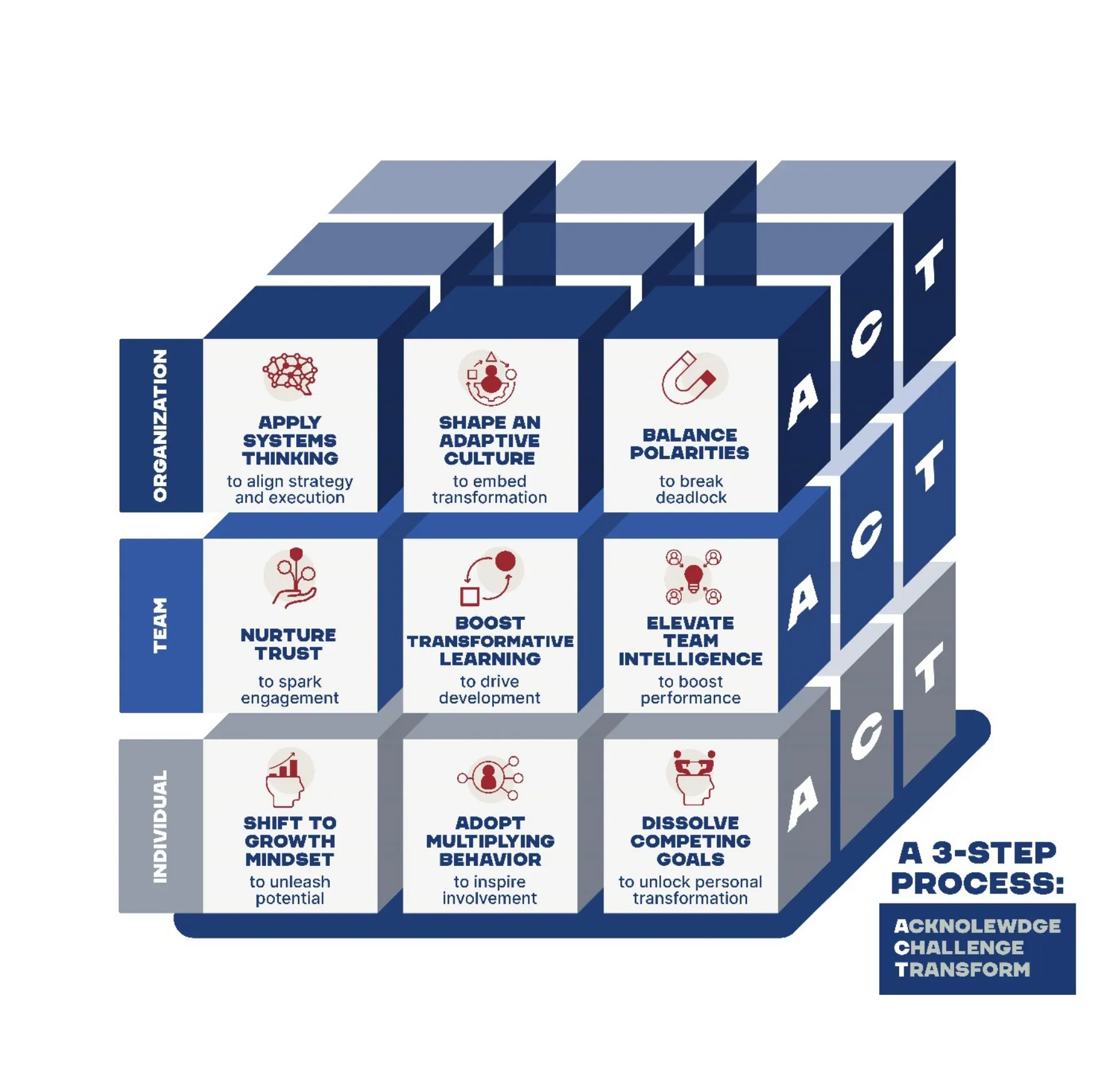The legal profession is at a defining moment.
Rapid technological advancements, evolving client demands, shifting workforce expectations, and fierce competition for top talent are reshaping the very foundations of how law firms operate.
From digital innovation to cultural shifts and workforce evolution, transformation is happening everywhere – and it’s rewriting the future of law firms, whether they’re ready or not.
Firms that prioritize fast and ongoing transformation will secure their place at the forefront – regardless of the type of transformation.
This article explores why human transformation should be at the top of every law firm leader’s agenda — and which nine areas are essential to master for real adaptability and future success.
Transformation is “Change²”
Beyond leading change: guiding identity shifts
Transformation isn’t just change; it’s change² — a deeper shift that touches identity on multiple levels:
- Organizational identity: What value does our firm provide, and how do we deliver it?
- Team identity: What makes us a high-performing team?
- Individual identity: What value do I contribute, and how do I create it?
This makes transformation more radical – and more challenging – than traditional change.
It demands leaders with new tools and skills to guide their firms through these profound shifts.
Adaptability: the key competitive advantage
What drives success for your firm in times of constant transformation?
The answer: adaptability – the ability of your organization and its members to continuously learn, evolve, and seize opportunities.
For law firms, adaptability leads to:
- Effective multidisciplinary collaboration
- Enhanced talent retention and development
- Creation of innovative products and services
Research by Chatman et al. (2014) shows that firms with strong adaptability deliver better financial performance.
For leaders, the message is clear: fostering adaptability is a strategic imperative – and at its heart lies human transformation.
Leading human transformation
Transformation always begins with people – their capacity to learn, adapt, and grow.
Human transformation occurs across three dimensions:
- Behavioral patterns – e.g., embracing collaboration in multidisciplinary teams
- Mindsets – shifting from “individual expertise” to “collective curiosity”
- Roles and identity – redefining leadership from control to empowerment
As a leader, your responsibility is to foster these learning processes across individuals, teams, and the entire organization.
Leadership compass: how leaders drive adaptability
Supporting human transformation requires a distinct skill set that goes far beyond traditional “change management.”
Leaders should focus on three core tasks:
- Foster transformation readiness – in yourself and others
- Strengthen meta-skills – like curiosity, tolerance for ambiguity, and the courage to challenge assumptions
- Build supportive systems – that make transformation part of daily practice
Drawing from over 25 interviews with Managing Partners, CEOs, and CHROs, nine focus areas emerged to strengthen adaptability.
Let’s explore one from each level:





